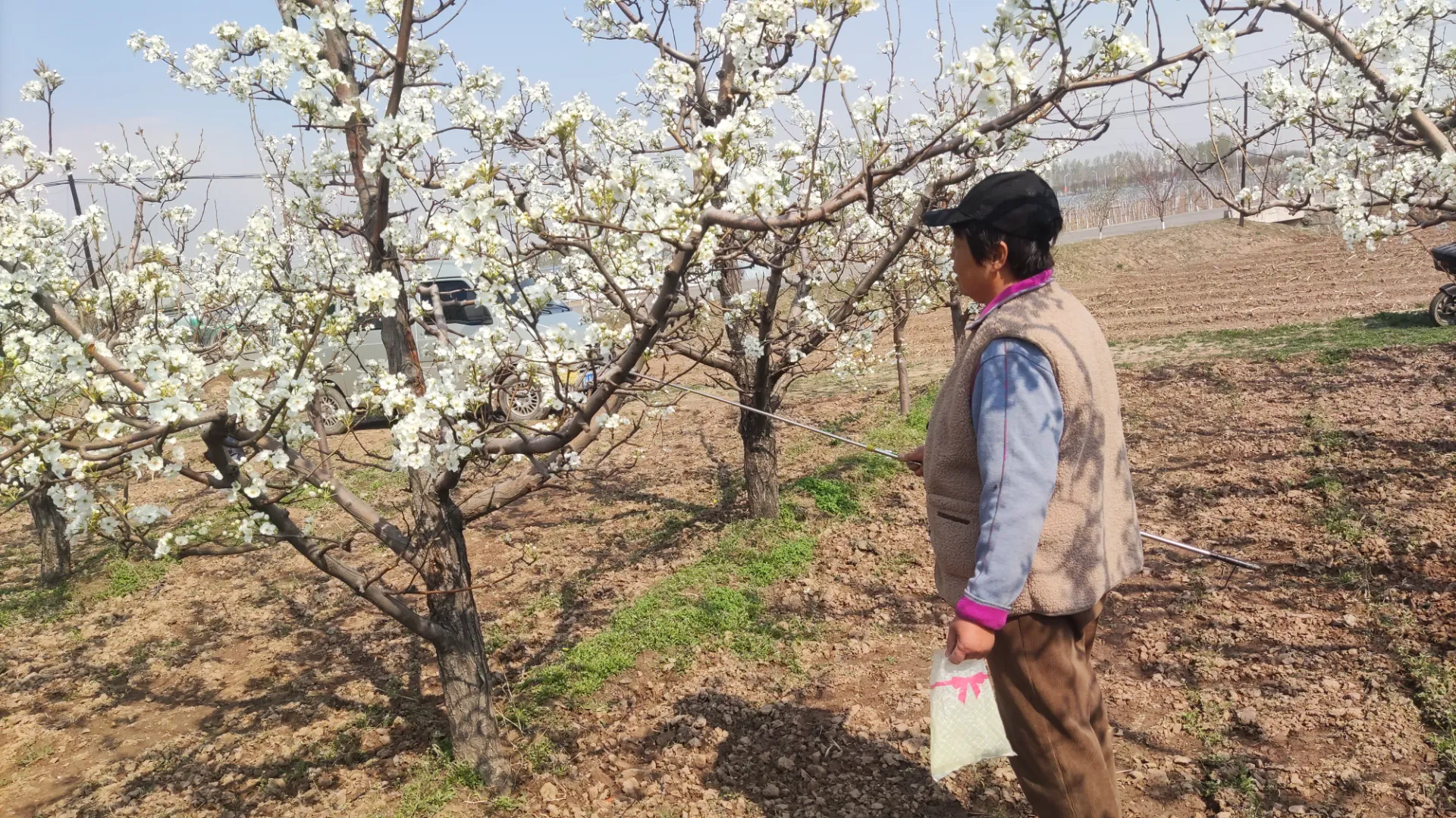nov. . 01, 2024 11:33 Tornar a la llista
Power of Pear Flower Powder: A Vital Tool for Pollination
Pollination is the key to fruitful harvests, and pear flower powder plays an essential role in ensuring that pear trees are pollinated effectively. Whether you're a farmer looking to maximize your yield or simply curious about how pear trees thrive, understanding active pear pollen for pollination, how it's collected, and its compatibility is crucial. In this article, we'll dive into the fascinating world of pear flower powder, the methods of collecting pear pollen, and its compatibility with different pear varieties.

The Role of Pear Flower Powder in Pollination
Pear flower powder, also known as pear pollen, is indispensable in the process of pear tree pollination. When trees bloom in spring, their flowers produce this powdery substance, which contains the male reproductive cells necessary for fertilizing the pear flowers. In orchards, especially where there may be fewer bees or natural pollinators, pear flower powder is often manually applied to flowers to ensure successful fertilization. This leads to the development of healthy, high-quality fruits.
By enhancing the efficiency of pollination, pear flower powder not only boosts fruit production but also ensures the genetic diversity of the trees, resulting in more resilient and disease-resistant crops. For those in the agricultural industry, using pear flower powder for pollination can mean the difference between an average and an exceptional harvest.
How Active Pear Pollen for Pollination Works
Active pear pollen for pollination refers to the use of fresh, viable pollen that is actively applied to pear flowers to stimulate the fertilization process. This method is particularly useful in areas where natural pollinators, like bees, may be scarce or where weather conditions prevent effective pollination. Farmers or horticulturists can gather active pear pollen, store it carefully, and then use it to manually pollinate flowers at the optimal time.
The active pollen remains fertile and viable, increasing the likelihood of successful pollination. This controlled approach ensures that even in less-than-ideal conditions, the pear trees receive the pollen they need for fruit production. It's a technique that's especially valuable for large orchards or in regions where weather patterns may disrupt natural pollination processes.
Methods of Collecting Pear Pollen: Ensuring Quality
Collecting pear pollen is a delicate process that requires careful timing and precision. The goal is to collect the pollen when it's at its most viable—usually when the flowers are in full bloom. The methods typically involve gently tapping or shaking the flowers to release the pollen, which is then gathered and stored in a dry, cool environment.
Here are the common methods of collecting pear pollen:
- Hand Collection: This involves manually tapping the flowers and collecting the pollen in a container. It's labor-intensive but ensures high-quality, uncontaminated pollen.
- Mechanical Collection: In large orchards, machines are sometimes used to shake the branches and collect the pollen in trays or bags.
- Bee Pollen Traps: In some cases, bees are used to collect pollen. Special traps are fitted at the entrance of beehives, capturing the pollen as bees enter the hive.
After collection, the pollen is typically dried and stored in a cool place to maintain its viability. Properly stored pear pollen can remain usable for several months, making it a valuable resource throughout the growing season.
Understanding Pear Pollen Compatibility for Effective Pollination
Pear pollen compatibility is a crucial factor in ensuring successful pollination. Not all pear varieties are compatible with each other, meaning that the pollen from one type of pear tree may not fertilize the flowers of another. Cross-pollination between compatible varieties is often necessary for the production of healthy fruits.
Farmers need to ensure that their orchards have compatible pear varieties planted nearby or that they are using compatible pear flower powder to pollinate their trees. For example, some pear varieties are self-sterile, meaning they cannot fertilize themselves and require pollen from another variety to produce fruit. Understanding which varieties are compatible can lead to more successful pollination and a higher fruit yield.
Enhancing Harvests with Pear Flower Powder
Pear flower powder, or pear pollen, is more than just a natural byproduct—it's a critical tool for ensuring successful pollination and abundant fruit harvests. Whether through the application of active pear pollen for pollination, using precise methods of collecting pear pollen, or ensuring pear pollen compatibility between varieties, farmers can optimize their yields and produce high-quality fruits. By harnessing the power of pear pollen, growers can take control of the pollination process and enjoy healthier, more productive pear trees.
-
Shifting Patterns in Ambrosia Pollen, Grass Pollen, and Pine Tree Pollen
NotíciesJul.07,2025
-
Revolutionizing Cherry Pollen Preservation: Freeze-Drying and Cryopreservation
NotíciesJul.07,2025
-
Navigating Seasonal Challenges in Plum Pollen Production and Supply
NotíciesJul.07,2025
-
Global Surge in Kiwipollen Demand: Trends Shaping Wholesale Markets
NotíciesJul.07,2025
-
Commercial Harvesting and Processing of Pear Pollen
NotíciesJul.07,2025
-
Best Practices for Processing and Buying Apple Tree Pollen
NotíciesJul.07,2025